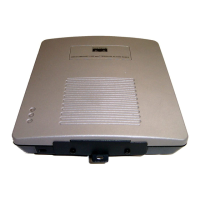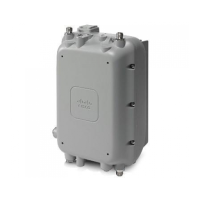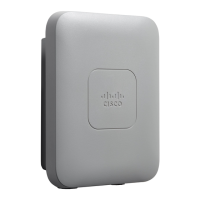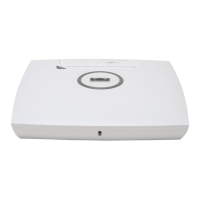9-17
Cisco Aironet 1200 Series Access Point Software Configuration Guide
OL-2159-01
Chapter 9 Diagnostics and Troubleshooting
Using Diagnostic Pages
• Purge Log—Permanently deletes all events from the log.
• Additional Display Filters—A link to the Event Display Setup page, where
you can change time and severity level settings.
Log Headings
The event log is divided into three columns:
• Time—The time the event occurred. The log records time as cumulative days,
hours, and minutes since the access point was turned on, or as wall-clock time
if a time server is specified or if the time has been manually set on the access
point.
• Severity—Events are classified as one of four severity levels depending on
the event’s impact on network operations. Severity levels include:
–
Info (green)—Indicates routine information; no error.
–
Warning (blue)—Indicates a potential error condition.
–
Alert (magenta)—Indicates that an event occurred which was
pre-selected as something to be recorded in the log. A typical example of
an alert would be a packet error condition. The Station page provides
check boxes that activate reporting of packet errors to and from the
station as alerts in the event log.
–
FATAL (red)—An event which prevents operation of the port or device.
For operation to resume, the port or device usually must be reset.
Click the Severity heading to go to the Event Log Summary page, which lists
total events for each severity level.
• Description—This column describes the nature or source of the event. If a
network device is involved in the event, the device’s MAC or IP address
appears and provides a direct link to the device’s Station page.
Saving the Log
To save the event log, click Download Event Log. In Microsoft Explorer, the log
is saved as a text file. In Netscape Communicator, the log file is displayed on the
screen, and you select Save As from Communicator’s File pull-down menu to
save the log.

